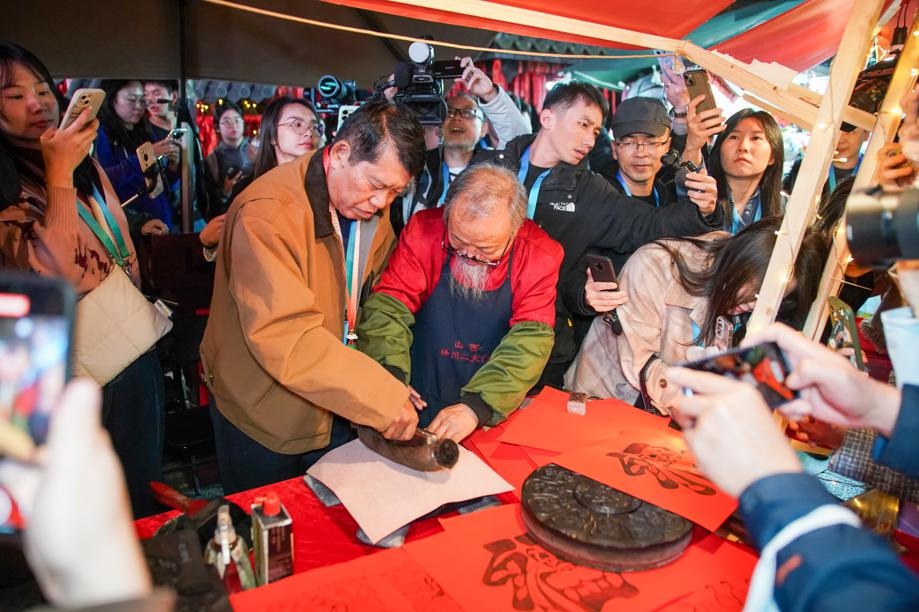China aims for more ambitious space missions in 2025


BEIJING -- China is set to embark on a series of ambitious space missions in 2025, including a new sample return mission, and the debut of an array of new spacecraft, rockets and satellites, which will further enhance its deep-space exploration capabilities and lay a solid foundation for better commercial space services.
China plans to launch the Tianwen 2 probe this year, which will carry out a sample return mission from a near-Earth asteroid coded 2016HO3 and then orbit explorations of a comet coded 311P in the main asteroid belt between Mars and Jupiter.
If successful, it would bring back China's first samples collected from interplanetary space, said Zhang Rongqiao, chief designer of China's planetary exploration program and the Tianwen 2 mission.
This year will also witness the launch of the Shenzhou XX and Shenzhou XXI crewed missions, as well as the Tianzhou 9 cargo craft for the country's space station operation.
China is also advancing efforts to provide low-cost, high-performance cargo transportation services for its space station. The Qingzhou cargo spacecraft, developed by the Innovation Academy for Microsatellites of the Chinese Academy of Sciences, is slated for launch in September 2025.
It features an integrated single-capsule configuration with a cargo volume of 27 cubic meters and a cargo capacity of up to 2 tonnes. It can carry astronaut living supplies, scientific experiment equipment and scientific payloads.
The spacecraft will employ a variety of payload schemes and intelligent designs to enhance the efficiency of cargo delivery, retrieval and handling for astronauts.
NEW VEHICLES
The Long March 8A carrier rocket, an upgraded version of the Long March 8 rocket designed for medium- and low-Earth orbit missions, is set to conduct its maiden flight in 2025.
"This rocket is specifically developed to meet the launch requirements of large-scale constellation networks," said Song Zhengyu, chief designer of the Long March 8 rocket at the China Academy of Launch Vehicle Technology (CALT).
The Long March 8A boasts advanced performance, low cost, high reliability and rapid launch capability, with an approximate payload capacity of 7 tonnes for low Earth orbit and at least 6.4 tonnes for a 700-kilometer sun-synchronous orbit.
The country is also developing new-generation rockets for its future crewed lunar and Martian exploration missions.
The Long March 10 carrier rocket is being developed to launch new-generation manned spacecraft and landers for China's lunar landing program, according to Long Lehao, a rocket designer at the CALT. The rocket will enhance the country's lunar transfer orbit payload capacity from 8.2 tonnes to 27 tonnes, and can deliver a 70-tonne payload into low Earth orbit.
The Long March 9 rocket, a heavy-lift launch vehicle currently under development, is designed to support major national sci-tech activities, including lunar research stations, space power stations and manned landings on Mars. It will be capable of carrying payloads of 140 tonnes to low Earth orbit, 50 tonnes to lunar transfer orbit and 35 tonnes to Mars transfer orbit.
Meanwhile, commercial space companies are intensifying efforts to advance reusable spaceflight technologies, with numerous test flights of new reusable rockets underway. Among these, LandSpace's Zhuque 3 rocket is scheduled for its maiden flight in 2025. As a cornerstone of the commercial space industry, reusable rockets enable high-capacity, cost-effective, frequent and sustainable space launches.
NEW SATELLITES
China will see the Solar wind Magnetosphere Ionosphere Link Explorer (SMILE), a joint mission satellite between the Chinese Academy of Sciences and the European Space Agency, launched this year.
Equipped with four payloads, the satellite aims to explore the large-scale structure and fundamental patterns of the interaction between the solar wind and the magnetosphere, understand the overall change process and activity cycle of Earth's substorms, and investigate the occurrence and development of magnetic storms driven by coronal mass ejection events.
From 2025 to 2035, China will enhance the second-generation Fengyun meteorological satellites and concurrently develop the third-generation Fengyun satellite integrated observation system. It will advance intelligent space-ground collaborative observation technology to support precise forecasting.
Currently, the third-generation Fengyun meteorological satellites, including the Fengyun 5 polar-orbiting satellites and the Fengyun 6 geostationary satellites, are under feasibility study phase.
The year 2025 also marks a pivotal year for the development of China's next-generation Beidou Satellite Navigation System (BDS), with key technology breakthroughs planned for completion.
Building on the stable operation of BDS-3, the next-generation Beidou system will feature high precision and reliability, ubiquitous access, intelligence, networking and flexibility, as outlined in a development plan released in November 2024.
China will continue the large-scale deployment of its satellite Internet constellations, further enhancing global communication coverage. The Spacesail Constellation, a low Earth orbit megaconstellation, is set to launch its worldwide satellite Internet service this year, supporting sectors such as transportation, new energy, smart cities and smart agriculture, among others.
- China aims for more ambitious space missions in 2025
- Beijing to add 20,000 primary and secondary school seats in 2025
- Highlights of Inner Mongolia Government Work Report unveiled
- University presidents unveil declaration for building a strong education nation
- Chinese Navy hospital ship returns home following humanitarian mission
- China's high-speed railways offer majority of passenger trips in 2024





































